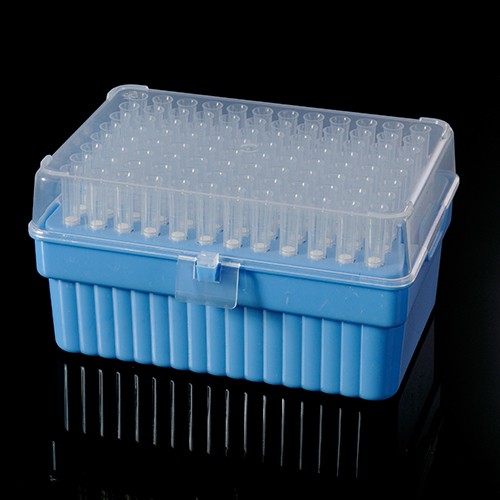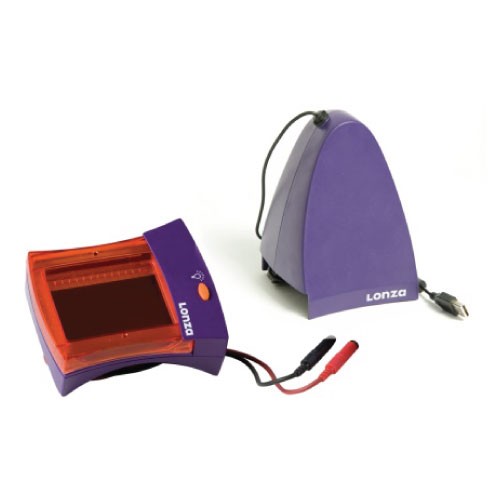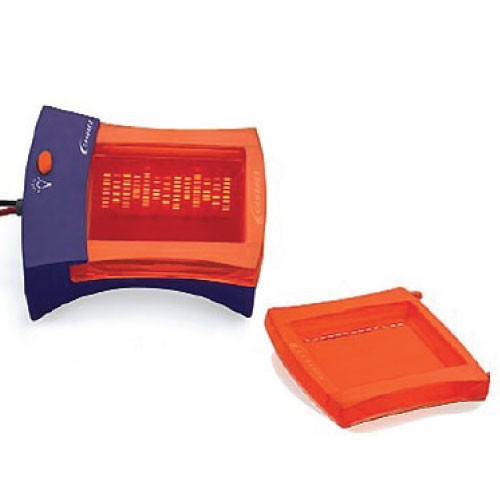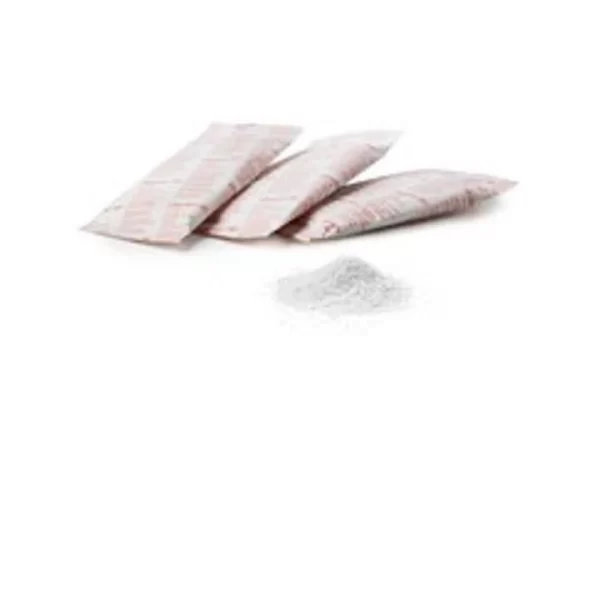
EXtrelut® NT Refill pack for column fillings EXtrelut® NT 20 (Merck)
RM0.00Brand:
Merck
Description:
CAS Number : 68855-54-9
Extrelut® NT simplifies liquid-liquid extraction in its most effective form by using a chemically inert, wide-pore and highly pure diatomaceous earth based solid phase. Depending on the sample volume three types of columns are available: Extrelut® NT1 can take up a maximum of one ml, Extrelut® NT3 three ml and Extrelut® NT20 up to twenty ml of sample.
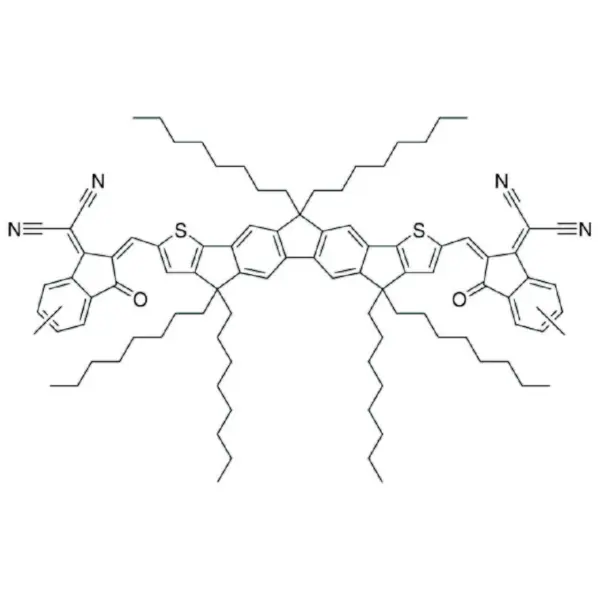
F-M – Sigma-Aldrich
RM3,751.00Brand:
Sigma-Aldrich
Synonyms
4,4,7,7,12,12-octyl-7,12-dihydro- bis[methylidyne(3-oxo-methyl-1H indene-2,1(3H)-diylidene)]]bis-4H-thieno[2″,3″:1′,2′]indeno[5′,6′:5,6]-s-indaceno[1,2-b]thiophene, FTIC-C8C8M
CAS No
2239303-91-2
General Description
Non-fullerene acceptors (NFAs) are currently a major focus of research in the development of bulk-heterojunction organic solar cells (OSCs). In contrast to the widely used fullerene acceptors (FAs), the optical properties and electronic energy levels of NFAs can be designed and readily tuned. NFA-based OSCs can also achieve greater thermal stability and photochemical stability, as well as longer device lifetimes, than their FA-based counterparts. Recent developments have led to a rapid increase in power conversion efficiencies for NFA OSCs, with values now exceeding 15% in a single junction cell, and >17% for a tandem cell, demonstrating the viability of using NFAs to replace FAs in next-generation high-performance OSCs.
Application
F-M is a non-fullerene acceptor that absorbs visible light, when used in a front cell paired with NIR absorbing rear cell, the resulted tandem organic solar cell gave a record energy conversion efficiency of 17.3%.[1]
Tandem Cell Device performance:
ITO/ZnO/PFN-Br/PBDB-T:F-M/M-PEDOT/ZnO/PTB7- Th:O6T-4F:PC71BM/MoO3/Ag
Voc=1.642 V
Jsc=14.35 mA/cm2
FF=73.7%
PCE=17.3%

F100 Nitrofurantoin
RM83.00Brand:
Thermo ScientificTM OxoidTM

F200 Nitrofurantoin
RM0.00Brand:
Thermo ScientificTM OxoidTM

F300 Nitrofurantoin
RM83.00Brand:
Thermo ScientificTM OxoidTM
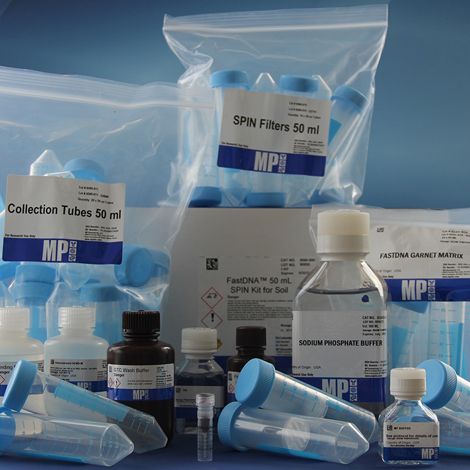
FastDNA 50ml Spin Kit for Soil
RM0.00Brand:
MP Biomedicals
Up to 5 g of soil are processed by the FastPrep®-24 or FastPrep®-96 instrument with the Lysing Matrix E tubes designed to efficiently lyse all microorganisms including difficult sources such as eubacterial spores and endospores, gram positive bacteria and yeast. The released DNA is purified by a silica-based spin filter columns and removes humic acids/polyphenols that can inhibit PCR. The resulting pure DNA is suitable for PCR analysis and other downstream applications. Research use only. Key applications include isolation of bacterial, fungi, plant and genomic DNA from soil and evnironmental samples.
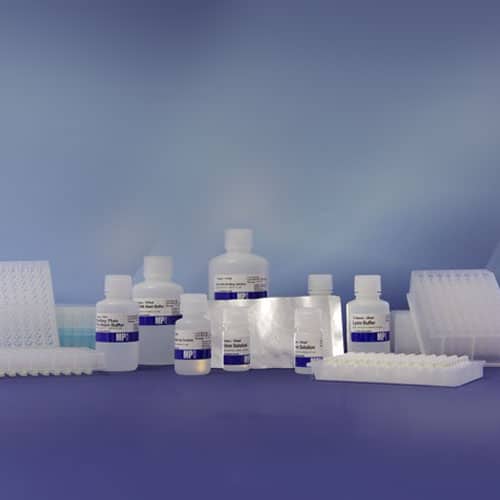
FastDNA-96 Soil Microbe DNA Kit
RM0.00Brand:
MP Biomedicals
The FastDNA-96™ Soil Microbe DNA Kit quickly and efficiently isolates humic-free, PCR-ready genomic DNA from soil samples in approximately 50 minutes. Gram(+/-) bacteria, fungi, plant and animal tissues, algae, spores and many other members of a soil population including clay, sandy, silty, peaty, chalky, and loamy soils, are efficiently lysed in approximately 60 seconds with the FastPrep-96™ Instrument. Research use only. Key applications include isolation of PCR-Ready Genomic DNA from Soil Samples.
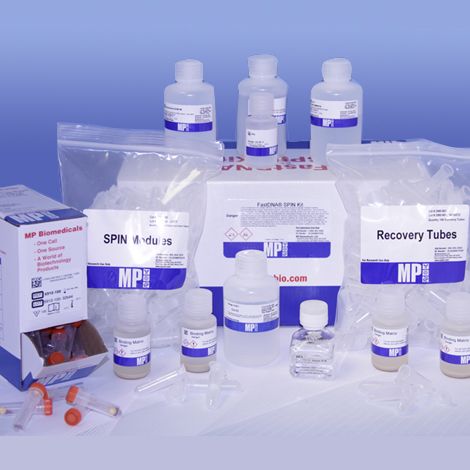
FastDNA™ Spin Kit
RM1,796.00Brand:
MP Biomedicals
The FastDNA™ SPIN Kit, an updated version of the well-known FastDNA™ Kit, is used with any FastPrep® Instrument to lyse and subsequently isolate DNA from up to 200 mg of almost any sample in less than 30 minutes. Features: Isolation of genomic DNA from plants, animals, bacteria, yeast, algae, and fungi using a silica spin fi lter method: Rapid and reproducible sample lysis with the FastPrep®-24 or FastPrep® FP120 Instrument, Lyse and isolate DNA in less than 30 minutes from a variety of sample types, Flexible format eliminates need for separate DNA isolation kits, No hazardous organic reagents required, SPIN Filters are included to streamLine silica handling. Research Use Only. Key applications include DNA extraction and purification from virtually and sample.

FastDNA™ Spin Kit for Soil
RM0.00Brand:
MP Biomedicals
The FastDNA® SPIN Kit is designed for use with any FastPrep® Instrument, plant and animal tissues, bacteria, algae, fungi spores and other members of a soil population are easily lysed within 40 seconds. These benchtop devices use a unique, optimized motion to homogenize samples by simultaneous impaction with lysing matrix particles. Features: Isolation of DNA from cells present in soil or other environmental samples, Rapid and reproducible sample lysis with the FastPrep®-24 or FastPrep® FP120 Instrument, Easily isolate DNA from a variety of organisms in many different types of soil, Lyse and isolate DNA in less than 60 minutes, No hazardous organic reagents required. Research Use Only. Key applications include isolation of bacterial, fungal, plant and animal genomic DNA from soil and other environmental samples.
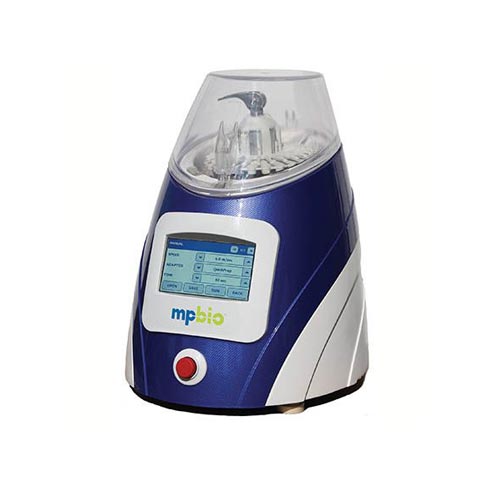
FastPrep-24™ 5G Grinder
RM0.00Brand:
MP Biomedicals
Description
The FastPrep-24 5G is a versatile sample disruption instrument designed to quickly and efficiently homogenize, grind, or lyse biological samples. A completely self-contained system, the FastPrep-24 5G eliminates the risk of cross-contamination and time-consuming clean-up associated with manual lysis methods. Samples are added to individual lysing matrix tubes and placed into sample holder adapters within the instrument. The unique, optimized motion of the FastPrep-24 5G shakes the samples in a tridimensional motion resulting in the collision of the sample material with the lysing matrix particles.
Intuitive software makes programming the FastPrep-24 5G fast and simple. The programmable touchscreen display allows for the use of pre-determined or custom homogenization speeds and duration times with a finger touch. Increased power features result in faster processing times and complete lysis of even the toughest samples.
Key application include:
-Suitable for all sample types
-Lysis of yeast, fungi, and bacteria, soft tissues, cells
-Isolation of PCR-Ready Genomic DNA from fecal or soil samples
-Isolation of PCR-Ready Genomic DNA from fungi and bacteria samples
-DNA & RNA Purification
-Breaks hard/brittle samples
-Isolate DNA from virtually any source.
-Lysis of highly contagious samples
-Grinding of teeth, bones, hair and pulverization of building materials
Please contact us for pricing and availability.
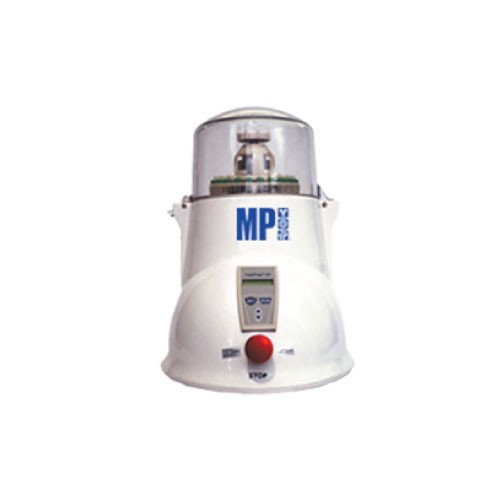
FastPrep®-24 Classic Instrument
RM0.00Brand:
MP Biomedicals
Description
The FastPrep-24™ Classic Instrument is a high-speed benchtop homogenizer offering the ultimate in speed and performance for the lysis of biological samples. Simultaneous homogenization of up to 24 samples takes place within 40 seconds.
Please contact us for pricing and availability.

Fca25 Fluconazole
RM0.00Brand:
Thermo ScientificTM OxoidTM

FD10 Fusidic Acid
RM80.00Brand:
Thermo ScientificTM OxoidTM

Fd5 Fusidic Acid
RM0.00Brand:
Thermo ScientificTM OxoidTM

Fd50 Fusidic Acid
RM0.00Brand:
Thermo ScientificTM OxoidTM

Fep30 Cefepime
RM80.00Brand:
Thermo ScientificTM OxoidTM
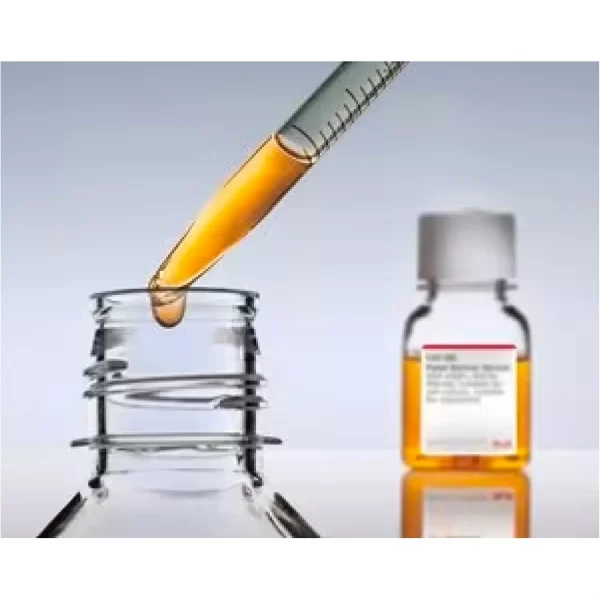
Fetal Bovine Serum non-USA Origin, Sterile-filtered, Suitable for Cell Culture
RM2,895.00Brand:
Sigma
Description
Synonyms: Fetal Calf sera, Fetal Calf serum, FBS, FCS, sera, serum
Fetal calf serum is a common supplement used in cell culture media to promote cell growth and proliferation. It is a non-USA origin fetal calf serum that has been sterile-filtered, making it free from contaminants and suitable for use in cell culture applications. This product is an excellent choice for those looking for a reliable and high-quality fetal calf serum that can support a wide range of cell types in culture.

Ffc30 Florfenicol
RM82.00Brand:
Thermo ScientificTM OxoidTM
Filter Tips Racked
Brand:
This item is not available at the moment. Please contact us for more information.Biologix
Characteristics
● Tips are made of medical grade polypropylene, and filters are made of highly hydrophobic UHMWPE
● Filters prevent cross-contamination and damage to samples, ensure accurate and precise sample aspiration, and protect the user by preventing sample liquid or vapor from entering the pipette body
● Standard filter tips and low-adsorption-treated filter tips available in all sizes
● Low-adsorption treated tips undergo a coating-free treatment and will not contaminate samples
● All filter tips are autoclavable
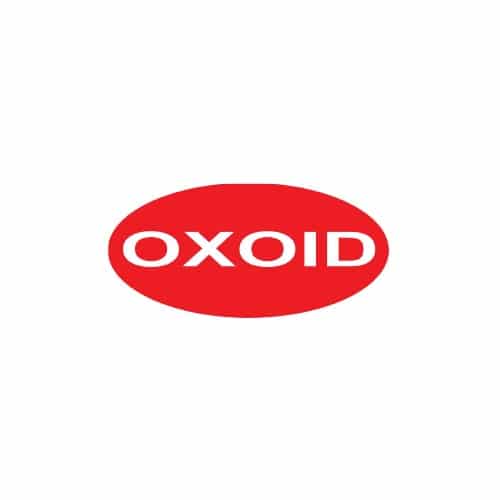
Filtered Horse Serum 100ml
RM0.00Brand:
Thermo ScientificTM OxoidTM
**This product is not available at the moment. Please contact us for more information.
Thermo Scientific™ Oxoid Horse Serum is an extract of horse blood for addition to culture media.
FlashGel™ DNA System
RM8,200.00Brand:
Lonza
Description
5 minute DNA analysis
The FlashGel™ System is the fastest way to separate DNA and the only way to watch DNA migration as it happens. This revolutionary new tool separates DNA in 2 – 7 minutes. Monitor gel runs right at the bench, without UV light. The highly sensitive system allows a 5-20X reduction in DNA levels – saving both time and money.
Please contact us for pricing and availability.
Flatbed IEF System
RM0.00Now equipped with rehydration and focusing trays, the redesigned CSL-IEF has been optimised to perform first-dimension isoelectric focusing (IEF) with IPG (immobilised pH gradient) strips quickly, easily and reproducibly. An ideal entry-level system for both inexperienced and occasional IEF users, the CSL-IEF is also versatile enough to meet the needs of laboratories with increased throughput requirements.
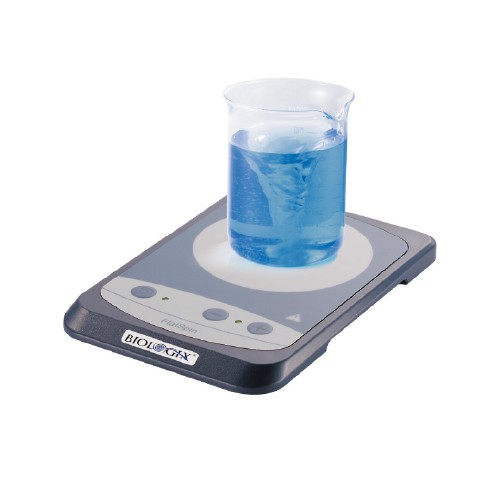
FlatSpin Magnetic Stirrer
RM0.00Brand:
Biologix
This product is not available at the moment. Please contact us for more information.
This ultra-flat magnetic stirrer is easily portable and saves precious space, making it an excellent addition to any laboratory.
Features
• Ultra-flat, space-saving design
• Stirring speed range: 15 – 1500 rpm
• Automatic rotation-reversing stirring for better mixing results
• Constructed of chemically resistant materials
• Slip-resistant and stable
Formamidinium bromide, ≥98% – Sigma-Aldrich
Price range: RM820.00 through RM2,395.00Brand:
Sigma-Aldrich
Synonyms
Formamidine hydrobromide, Greatcell Solar®, Iminomethylamine hydrobromide, Methanimidamide bromide
Cas No.
146958-06-7
General description
We are committed to bringing you Greener Alternative Products, which adhere to one or more of The 12 Principles of Greener Chemistry. This product has been enhanced for energy efficiency. Click here for more details.
Application
Formamidinium bromide can be used as a precursor material for the synthesis of perovskite absorber layers in solar cells. It can be explored as an additive or component in the design and development of new energy storage materials and devices.
Organohalide based perovskites have emerged as an important class of material for solar cell applications.[1][2][3][4] Our perovskites precursors are useful for synthesizing mixed cation or anion perovskites, needed for the optimization of the band gap, carrier diffusion length and power conversion efficiency of perovskites based solar cells.
Legal Information
Product of Greatcell Solar Materials Pty Ltd.Greatcell Solar is a registered trademark of Greatcell Solar Materials Pty Ltd.
Greatcell Solar is a registered trademark of Greatcell Solar



